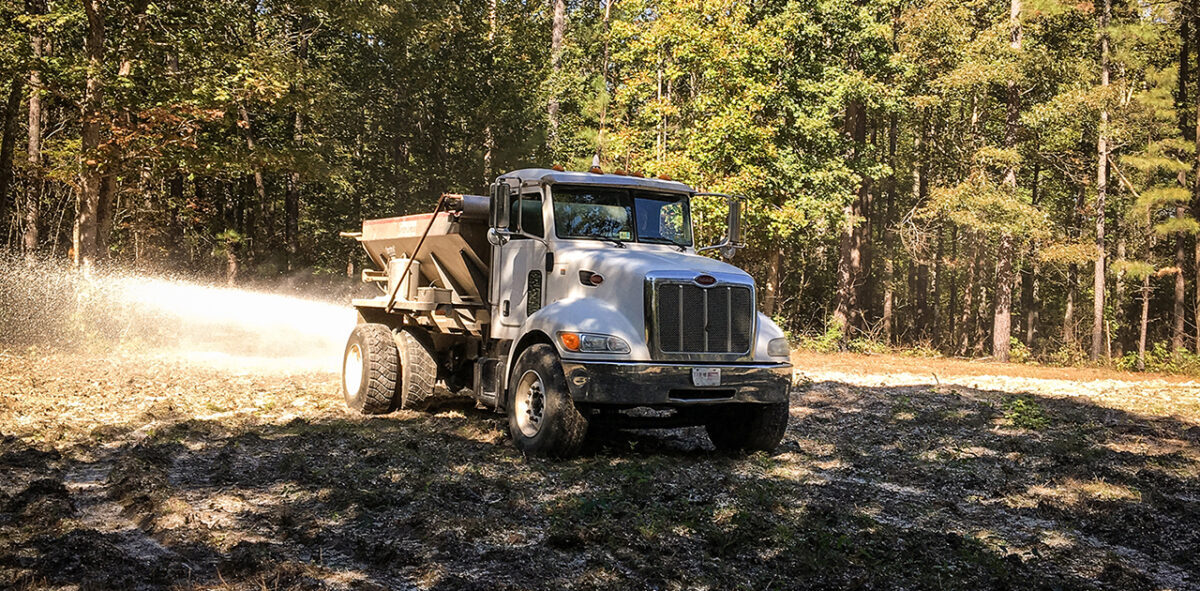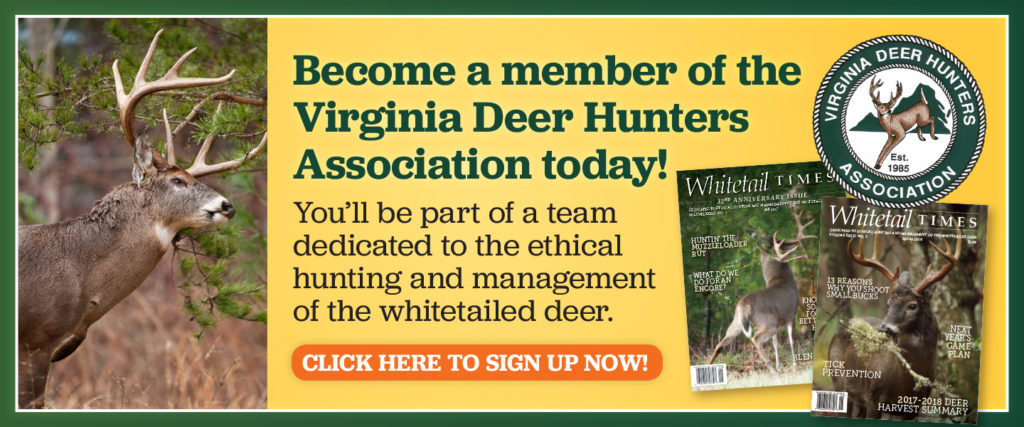
Fertilizer and lime are essential for good food plot results. The use of a good commercial spreader saves time with better results.
By Todd Engelmeyer
Photos by Todd Engelmeyer

Working the ground and preparing your site is a must. Anything short of this practice will prove to be a mistake.
I saw a commercial on TV the other day and it reminded me of all the experiences I did not have while planting food plots. There was a big beautiful blue sky as a backdrop to an almost new tractor with strategically placed mud on the fender. The mud matched that on the face of the operator that was wiped off with a perma-grin so big that it had to hurt. I almost lost it when they wiped away the sprayed-on sweat.
Well, planting food plots normally takes a lot of effort and timing, so don’t expect it to look like it did on TV! If you want to do it like me, you will first need to perfect procrastination. If you do that right, you will let many other things interest you and occupy your thoughts so that when you are driving down the road you almost wreck your truck because you realize it’s September 1. You now have one week to spray all the perennial weeds, plow and disc the land, take and send off a soil test, order seed and fertilizer based on test, prepare tractors, broadcasters and planters for use, and coordinate all the work with other people who have also perfected procrastination. Have you ever tried to herd cats?
Deciding what to plant is critical so Google it. After reading and watching the 10,500,227 articles and videos on the subject, you will have a clear understanding of what is best for you. This knowledge will help you rationalize the second mortgage that you will have to take to repair the bent chainsaw bar that a tree leaned on, the dent in the truck from where your buddy Darryl backed into a huge, easily seen tree, the tractor tire that blew when your same buddy’s younger brother (funnily enough also named Darryl) drove over a pine tree stub that was cut too sharp and low to see, a bent cultivator that got wound up in roots because of a shear pin failed because you had to use a bolt in its place because somehow the last time someone used it they decided nothing was a good replacement, and unpaid bills of lime, fertilizer and seed with late payments due just in time for Christmas. Pheeeew! Thank goodness I budgeted for all that.
So forget all that and do what any poor common sense person would do—beg, borrow and… well, do not steal or “borrow without asking,” because it is the same thing according to my old man. I have found a lot of people have both time on their hands and money to donate. So just ask the ones you don’t like and “improve” that relationship even more. This project is no different than any other with two governing rules:
- Don’t argue with free help.
- You get what you pay for.

Clover and oats are outstanding seed for fall planting. The clover will provide a noted summer food source and the oats will put deer in front of the gun during the upcoming hunting season.
That is except for clover, where so often you do not get what you pay for, so buy the cheap stuff at your local feed and seed. Lime and fertilizer can be tricky to borrow for sure (returning it is problematic). Side note; I’m a trained scientist and know what condensation is, but if you don’t, I’d tell you to get a big pile of donated lime dust and put a tarp over it to keep the hurricane rains off it for a week or so, and there you have it, condensation. Lime mud, anyone?
I’m not going to try to talk you into or out of food plots. I will leave that to the other million plus articles that forget to tell you that the average deer eats a ton—that is right a ton—of vegetation per year. But if you’re like me, once you decide to do it, it’s as good as done. The reason I plant food plots is hard to convey, and it’s something they can’t show on TV.
I love to see that first hint of color on the brown, cracked earth. It’s a luscious green sheen that lets me know I did something right for a change. I think of things to come, that the deer will be chowing down on my dime and I might get a crack at a nice one because of it. The reality is, if you like to play in the dirt and sweat and cuss profusely at inanimate objects, then join all of us that do too. New hunters and kids never forget the first time they drove a tractor, and it’s something you can spend your time and money on together for the rest of your life. I can sit for hours and enjoy literally watching the grass grow. Once again, an activity that I’m certain would have the lowest viewership of any reality TV show. Plus, who in the world would want to eat cheap venison anyway.
All kidding aside, if you need any advice, the Virginia Department of Wildlife Resources (DWR) is eager to help steer you. We have many previous and ongoing habitat projects on many of the Wildlife Management Areas and other public lands that give us knowledge and experiences to share. For example, with cooperative labor and equipment help from the Virginia Department of Forestry, we recently developed several wildlife plots totaling about 15 acres in a State Forest. This project was possible with material and money donations from the Virginia Deer Hunters Association Educational and Habitat Foundation, where we acquired 30 tons of donated lime from A&A Contractors and purchased fertilizer and seed for $1,600.
If you have the will, we can share the way to develop food plots or other habitat improvement projects, although I promise it will not be like anything you see on TV. Join all of us to conserve, connect and protect Virginia’s wildlife.
Todd Engelmeyer has been a district wildlife biologist with the Virginia Department of Wildlife Resources for 17 years, and currently covers 23 counties. He did his graduate work on the wild turkey at Christopher Newport University and worked as a wildlife scientist for the Oregon Fish and Wildlife and U.S. Army. His current work includes managing department programs like DMAP for 175 clubs and landowners, youth and apprentice hunts and training canines to detect invasive species. Todd is a family man who loves raising their three kids to enjoy the outdoors with his wife Jen. Contact Todd at todd.engelmeyer@dwr.virginia.gov with questions and comments.
©Virginia Deer Hunters Association. For attribution information and reprint rights, contact Denny Quaiff, Executive Director, VDHA.



